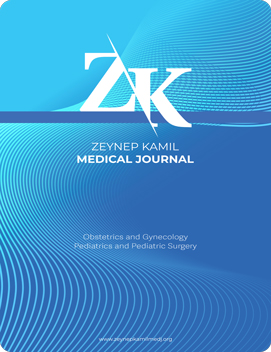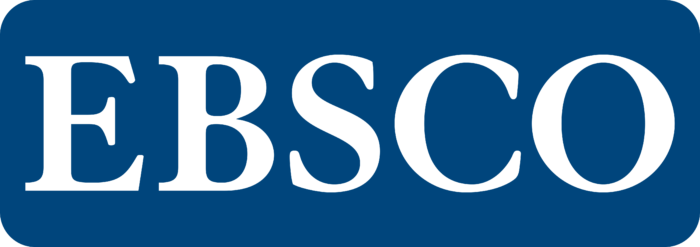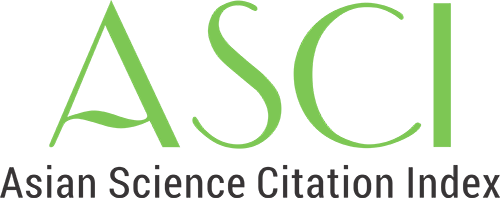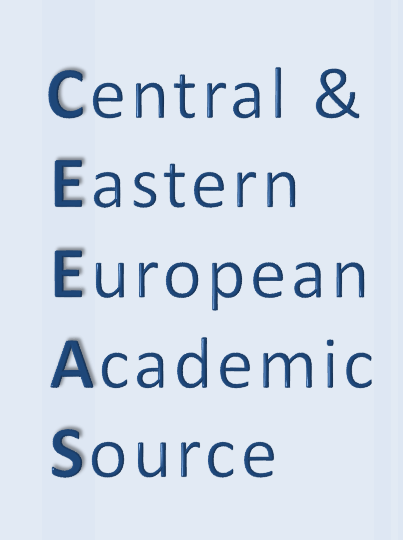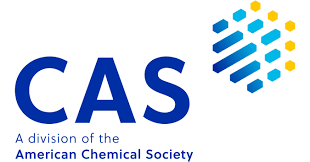Quick Search
Volume: 44 Issue: 3 - 2013
| ORIGINAL RESEARCH | |
| 1. | 36-37 Haftalık Nullipar Gebelerde Ultrasonografi ile Yapılan Servikal Uzunluk Ölçümü ve Gebelik Sonlama Zamanı Arasındaki İlişki Taner Günay, Gökçen Örgül, Mehmet Akif Sargın, Özgür Aydın Tosun, Sadık Şahin, Mustafa Eroğlu Pages 104 - 110 INTRODUCTION: The purpose of this study is to decide whether a simple transvajinal sonographic examination in the 36-37th weeks of pregnancy is a determining factor for diagnosing surmaturity in nulliparous women. METHODS: 75 primiparous singleton patients who had no fetal or maternal abnormalities were examined in the clinic and included in the study. Cervical length measurement was added to the routine ultrasonographic control. Patients were summoned for follow up exams according to the routine protocol. Postpartum data were compared to those gained by transvaginal sonographic cervical length measurements. RESULTS: Cervical lenghts of cases, gestation weeks, need for induction of labor and delivery types were compared. There were 43(%57.3) patients with a gestation week smaller than 41 weeks and 32 (%42.7) patients with a gestation week above 41 weeks. When delivery method was compared, %61.3 of patients (n=46) gave birth by normal spontaneus delivery, %38.7 of patients (n=29) gave birth by cesarean section. %46.7 (n=35) of patients needed induction while %53.5 (n=40) did not need induction. Patients with labor on time had a cervical length of 27.42+8.95 mm, surmature patients had a length of 34.03+7.92 mm. According to time of gestation weeks there was a statistically significant difference among cervical lengths of patients (p<0.01). Surmature births had a significantly higher cervical length than births on time. Vaginal deliveries mean cervical length was 26.67+8.3 mm, cesarean births mean value was 35.9+7.3mm. According to delivery types, cervical length of cases had statistically significant p value (<0.01). Cesarean delivery cervical lengths were higher than vaginal deliveries. DISCUSSION AND CONCLUSION: Transvaginal sonographic cervical lenght measurement is a simple method can be used in the third trimester of pregnancy. As a result of our study, we decided that cervical lenght measurement can be used to predict postmaturity. Early diagnosis of surmaturity can be helpful for obstetricians for the management of pregnancy. |
| 2. | Preeklamptik Gebelerde Trombosit Fonksiyonlarının Agregometre ile Değerlendirilmesi Sadık Şahin, Mustafa Eroğlu, Özlem Bingöl Özakpınar, Aysın Tulunay, Birsen Konukçu, Şermin Tetik Pages 111 - 115 INTRODUCTION: Platelets are thought to be involved in the pathogenesis of preeclampsia. Our objective was to determine the platelet aggregation in preeclamptic patients by aggregometry in the third trimester. METHODS: Normotensive (Group 1, n=10) and preeclamptic patients (Group 2, n=10) were included into the study. All patients were evaluated in outpatient clinic and both clinical and laboratory parameters were recorded prospectively. Platelet aggregation was induced by the RESULTS: In our study, mean age was 27.6±4.3 and 26.7±2.2 years in preeclamptic and normotensive pregnants respectively. The rates of intrauterine growth retardation (IUGR) and preterm delivery were significantly higher in the preeclamptics with respect to the controls (p<0.05). Platelet aggregation was statistically significant in preeclamptic patients compared to the normotensive controls (%43 vs %67, respectively) (p<0.05). There was no difference with regard to the platelet aggregation between severe and mild preeclamptics. DISCUSSION AND CONCLUSION: Our study demonstrated a reduction in platelet aggregation in preeclamptic patients in third trimester. We thought that the observed reduction in platelet aggregation in preeclamptic petients might be related to the endothelial cell dysfunction seen in preeclampsia. |
| 3. | Preterm erken membran rüptürü olan gebelerde maternal ve fetal sonuçlar Abdulkadir Turgut, Ali Özler, Serdar Başaranoğlu, Senem Yaman Tunç, Elif Ağaçayak, Nevak Yaman Görük, Ahmet Yıldızbakan, Talip Gül Pages 120 - 126 INTRODUCTION: To analyze maternal and fetal outcomes of PPROM (preterm premature rupture of membranes), which is an important and frequent cause of preterm birth, neonatal morbidity and mortality. METHODS: In this study, 94 PPROM patients who had consulted to the Gynecology and Obstetrics Clinics of Dicle University Faculty of Medicine between January 2011 and December 2012 were analyzed retrospectively. Ages, number of gravidas, parities, miscarriages, living children, obstetrical histories, gestational weeks at childbirth, clinical findings, laboratory values, types of deliveries, indications of C sections, fetal birth weights and fetal lengths and 1.-5. minute- APGAR scores were assessed. RESULTS: The incidence of PPROM was 3.8 % in our hospital. Mean gestational week at birth and follow-up period of our patients were 31.5±3.1 weeks and 6.1±2.2 days, respectively. Mean C-reactive protein value and White Blood Cell count of our patients on admission were 3.2±4.4 mg/dl and 13626.9±3369.7/mm3, respectively. Steroid therapy was given to 66 (70.2%) patients with gestational age of < 34 weeks so as to achieve fetal pulmonary maturation. Febrile episodes (> 37.5 oC) developed in 14 (14.9%) patients. Growth of E.coli strains was observed in vaginal and cervical cultures of 13 (13.8%) patients. Patients with PPROM were delivered via normal vaginal route (n=51; 54.3%) or cesarean section (n=43; 45.7%). Newborns were brought into observation room (n=48; 51.1%) or neonatal intensive care unit (NICU) (n=46; 48.9%). Fourteen (14.9%) newborns monitored in the NICU died within 24 hours after birth. Five (5.3%) newborns were lost because of sepsis. Mean gestational age of the deceased newborns at delivery was 26.7±1.6 weeks. One- and five minute -APGAR scores increased in parallel with longer gestational weeks of the newborns at birth (r=0.660, p=0.000 and r=0.695, p=0.000, respectively) DISCUSSION AND CONCLUSION: PPROM is still considered as a prevalent obstetrical complication which leads maternal and/or fetal morbidity and mortality. The patients who seek medical care should be attentively assessed, definitive diagnosis should be absolutely established and patient specific treatment should be instituted in consideration of all complicating factors of pregnancy predominantly gestational week and infectious manifestations. These cases should be monitored and treated in advanced centers which can provide healthcare services in their adult and neonatal intensive care units. |
| REVIEW ARTICLE | |
| 4. | Endometriyozisin Etyopatogenezi Rukset Attar, Mustafa Eroğlu, Murat Bakacak, Gazi Yıldırım, M. Süha Bostancı, Özge Kızılkale, Cem Fıçıcıoğlu Pages 127 - 139 Aim: Endometriosis is a benign gynecologic disorder which affects life quality and is associated with dismenorrhea, pelvic pain and infertility. In this review we discussed the teories about the etiopathogenesis of endometriosis. Material and Method(s): IWe reviewed the English-language articles about the etiopathogenesis of endometriosis in the MEDLINE/PUBMED database Results: Many teories have been put forth about the etiopathogenesis of endometriosis. Mainly; Sampsons retrograde menstruation, coelomic metaplasia /induction, embryonic remnant, immunologic and lenfovasculer metastasis theories and genetic and environmental factors. Recently, it was stated that stem cells might play role in the development of endometriosis. Conclusion: Although many studies have been carried out on the etiopathogenesis of endometriosis, conclusive data have not been obtained yet. Probably, all the factors contribute to the development of the disease with different degrees. |
| 5. | Laparoskopik Doku Çıkarma Teknikleri Gazi Yıldırım, Mustafa Eroğlu, M. Süha Bostancı, Özge Kızılkale, Murat Bakacak, Rukset Attar, Mert Yeşiladalı, Sevgi Bilen, Cem Fıçıcıoğlu Pages 140 - 145 Increasing the variety of laparoscopic operations arise new challenges. Removal of tissues out of the small ports from the abdomen may become a major problem. By applying appropriate techniques on the eligible patients are able to eliminate these problems. Here, all of these techniques will be discussed. |
| CASE REPORT | |
| 6. | Turner sendromlu bir gebenin sağlıklı bir şekilde doğurtulması: Olgu Sunumu Sadık Şahin, Mustafa Eroğlu, Kadir Güzin, Birsen Konukçu Pages 146 - 149 Turner syndrome, resulting from the partial or complete loss of an X chromosome, is characterized by short stature, delayed puberty and primary amenorrhea. Before puberty, infertility is caused by the development of premature ovarian failure in these patients. Although successful pregnancies have been reported with the aid of assisted reproduction, women with this syndrome have lethal complications relating to the pregnancy. Turner syndrome is a relative contraindication for pregnancy however; it is an absolute contraindication for pregnancy in a patient with a documented cardiac anomaly. In this article, 31-year-old pregnant patient with Turner syndrome who had undergone successful termination of pregnancy is presented. |
| 7. | Sezaryen Skar Endometrioması: Olgu sunumu Özkan Özdamar, Ali Babacan, Ismet Gün Pages 150 - 163 Endometriosis is defined as the ectopic settlement of the endometrial stroma and the glands outside the uterine cavity. Scar endometriosis is a rare form of this disease with increasing incidence. The prevalent complaints are menstruation related nodule, pain and sometimes bleeding, in the area of surgical incision. The definitive therapy is surgery which requires attention to some points. In this case report, we examined the case of painful tumor emerging 22 months after cesarean section in the site of surgical incision, with an emphasis on the important points of surgery. |
| 8. | Prenatal Treatment of Fetal Goitrous Hypothyroidism by Intraamniotic Thyroxine Cihangir Yılanlıoglu, Altuğ Semiz, Yaşam Kemal Akpak Pages 155 - 158 We present the management of a case of fetal goitrous hypothyroidism (FGH) referred to our centre on completion of the 31th week with a view to prenatal treatment. The fetus displayed an anterior neck mass recognizable as thyroid by location and texture. The mother had normal thyroid function tests and no antithyroid antibodies. A cordocentesis was performed to reveal hypothyroid status, also checking the fetal karyotype which was a normal male. Intraamniotic injections of L-thyroxine 500 μg were carried out weekly. After six applications of the dose the pregnancy reached 38+5 weeks when normal delivery ensued, the newborn presenting a euthyroid status. He grew up to a healthy boy, now seven years of age, with completely normal motor and intellectual development. The rationale behind diagnosis, prenatal treatment and appropriateness of such management is discussed in this article. |
| 9. | Çocukluk Çağında Osteopetrozis Tarda: Olgu Sunumu Duygu Sömen Bayoğlu, Selçuk Gürel, Fatma Dolay, Narin Akıcı, Çağatay Nuhoğlu Pages 164 - 166 Osteopetrozis is a rare hereditary bone disease. Otosomal dominant form of osteopetrozis tarda is generally diagnosed randomly during adolescent period. Clinical progress is commonly asemptomatic but, hearing and visual losses are significant. In this case, we reported a six years old child randomly diagnosed as osteopetrozis tarda who had visual complications as well. |
| ORIGINAL RESEARCH | |
| 10. | Çocukluk Çağı Böbrek Taşları Tedavisinde İlk ESWL Deneyimlerimiz T Sekmenli, N Sekmenli, M Gündüz, I Çiftçi Pages 167 - 170 INTRODUCTION: In this study we aimed to share our findings about ESWL (Extracorporeal Shock Wave Lithotripsy) application results in 8 children with renal stone in our clinic. METHODS: RESULTS: Between 01.06.2012 and 01.12.2012, we applied ESWL in a total of 8 children with kidney stones at our clinic. One patient had stones in bilaterally sides while the others had them one side. Stone diameters were between 7 and 16 mm. The cases were 40 (18-108) months old in average and three of them were girls while the other five were boys. Before ESWL, double J catheter was placed to the side where there was kidney stones under general anesthesia. All procedures were performed under general anesthesia The device named Elmed (Ankara, Turkey) which has maximal of 2000 shocks and average of 12kV(kilovolt) energy was used in each session. The patients were checked up one week after stone breaking operation by using plain urinary system film and urinary system ultrasonography. For the stones were found not broken yet during the check up, second and maximum third session ESWL applied. The average remaining time of double J catheter was 22.8 days. All our patients were called for control in third and sixth months, no stone was found during the examinations. DISCUSSION AND CONCLUSION: As a minimally invasive method, ESWL was found to be effective and safe in the treatment of childhood urinary system stone disease. |
| CASE REPORT | |
| 11. | Cerrahi yapılamayan konjenital kistik adenomatoid malformasyonlu olguların takibi Egemen Eroğlu, Pınar Dayanıklı, Gülnihal Şarman, Nüvit Sarımurat Pages 171 - 175 Aim: The aim of this study is to attract attention to the possible importance of conservative treatment in cystic adenomatoid malformation Materials and method: The files of three conservatively followed cystic adenomatoid malformation patients, whom surgery could not be performed, were reviewed and the children were contacted to update their last clinical status. Results: Three babies with normal antenatal follow ups, except one hydronephrosis, were delivered by cesarean section due to early membrane rupture and bleeding at the 32nd, 34th and 35th weeks of gestation. The first APGAR score of the 32 week-old baby was 0, and the other two babies APGAR was 9. The newborn with 0 score was intubated and taken to the NICU directly, and the others later also needed to be intubated due to respiratory stress. After the radiologic studies, the babies were thought to have congenital cystic adenomatoid malformation and were registered for surgical treatment. Due to the rapid clinical and radiological improvement, surgery was postponed. They are now on their 3.5, 5th and 6th years of follow up and they are completely healthy. Conclusions: Patients in the present study are clinically disease free with conservative treatment but for better methodical follow up protocols, more patients and longer follow up periods are needed. |

